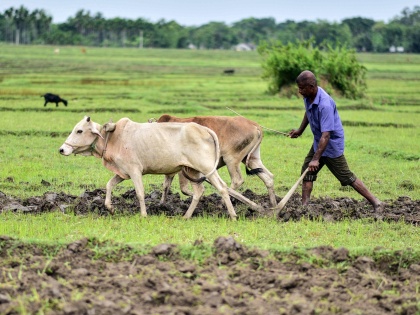'Sown area of rice and pulses in red due to deficient rainfall'
By IANS | Published: July 10, 2023 05:23 PM2023-07-10T17:23:22+5:302023-07-10T17:25:03+5:30
Chennai, July 10 Owing to deficient rainfall in several states, the sown area of kharif crops has declined ...

'Sown area of rice and pulses in red due to deficient rainfall'
Chennai, July 10 Owing to deficient rainfall in several states, the sown area of kharif crops has declined by 8.7 per cent this year as compared to last year, said an economist with the Bank of Baroda in a report.
“Sown area of kharif crops has declined by 8.7% compared with last year with rice and pulses remaining in red. 15 subdivisions (out of 36) and 12 states have received deficient rainfall during this period. The storage levels remain robust with 96% of live storage capacity to corresponding period last year,” Jahnavi Prabhakar said.
The advancement of the southwest monsoon across the entire country has resulted in above normal rainfall at 2 per cent above long period average (LPA) till July 9.
Due to excessive rainfall in some regions, the India Meteorological Department (IMD) has even issued red alert to remain cautious of the rising water levels. There also have been warnings of flash floods in some regions. However, the IMD expects post July 13, extremely heavy rainfall conditions will slowly start dissipating.
“Total sown area of rice (23.9 per cent) and pulses (25.8 per cent) have dropped significantly. Within pulses, lower acreage of arhar and urad was noted for the same period. Even the sown area of oilseeds (14.3 per cent), cotton (10.9 per cent), and jute and mesta (15.3 per cent) have fallen sharply. However, higher acreage has been registered for sugarcane (4.7 per cent) along with Jowar and Bajra crops,” Prabhakar added.
As regards the reservoir storage level, it stands at 29 per cent of the total capacity as on July 6. Total live storage available in 146 reservoirs stands at 96 per cent of storage of last year and 110 per cent of average storage for last 10 years.
Within regions, Northern region continues to have higher reservoir level (45 per cent against 24 per cent last year), followed by Central (35 per cent versus 30 per cent last year), Western (28 per cent versus 26 per cent) and lastly, Eastern region (20 per cent against 18 per cent). Reservoir level in Southern region currently is far lower at 20 per cent versus 40 per cent for last year, Prabhakar said in the report.
Disclaimer: This post has been auto-published from an agency feed without any modifications to the text and has not been reviewed by an editor
Open in app